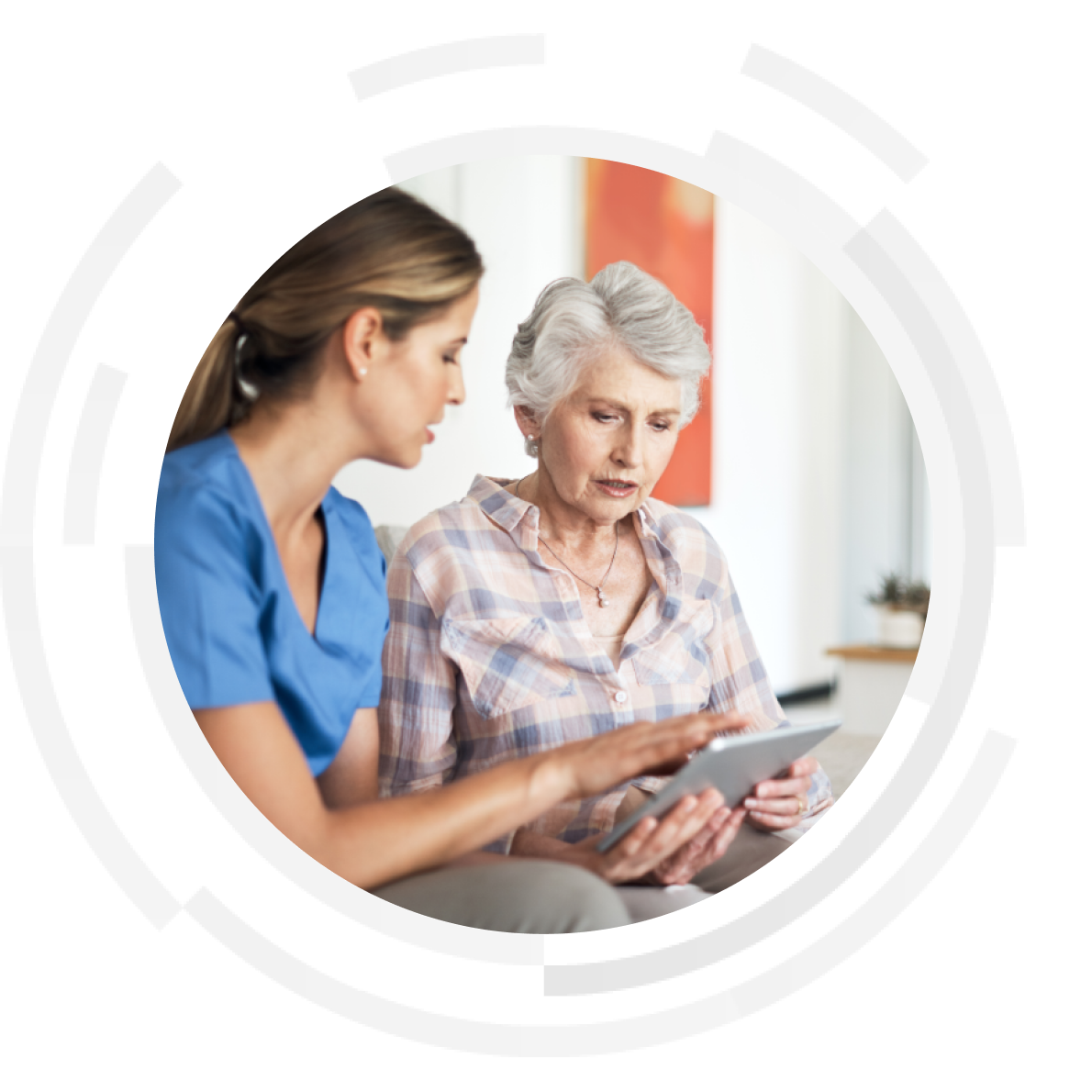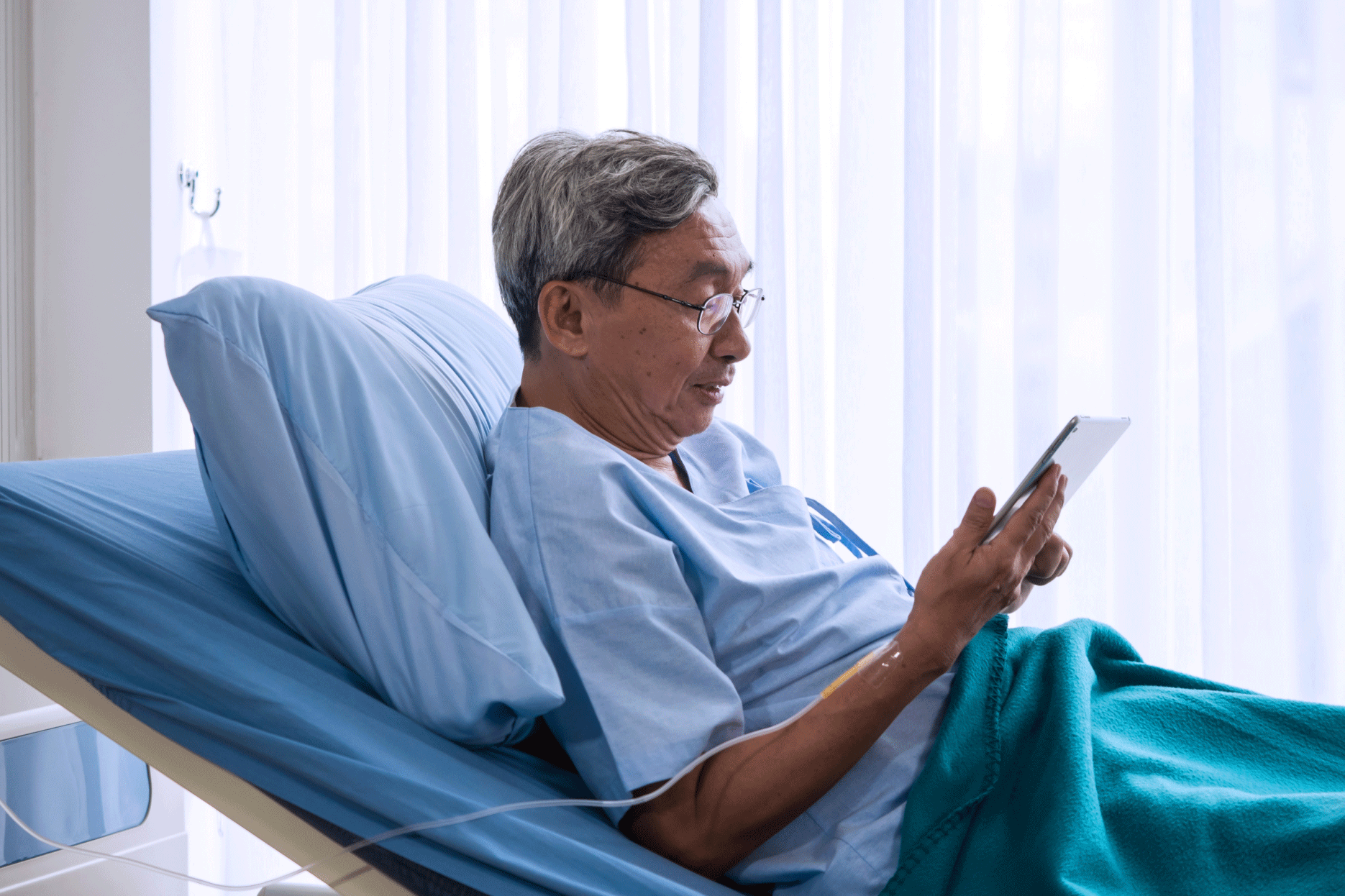The feedback collected through Patient-Reported Measures (PRMs) surveys in HOPE drives improvements in care across
the NSW Health system.

The Challenge
With today’s technological advancements, there is a lot we can tell about a patient without even talking to them (e.g. their heart rate, blood pressure, recent admission history). However, unless patients (and/or their carers) are asked what is important to them and how they rate their quality of life and experiences of healthcare, we do not know the whole picture.
By collecting Patient-Reported Measure (PRMs) surveys in HOPE, patients can provide a snapshot of their overall health, such as ability to socialise, shop, walk unaided, how they are feeling and sleeping. This information creates a new conversation with clinicians focused on what matters to the patient, helping provide a more holistic picture of their healthcare needs.

The Plan
eHealth NSW developed the HOPE platform in partnership with the Agency for Clinical Innovation and NSW Ministry of Health. It was co-designed with patients, carers, clinicians and service managers across NSW. HOPE is a purpose-built platform developed using ServiceNow and includes custom-built patient, carer and clinician portals.
Patients and/or carers can access their HOPE portals from any device anywhere using their Service NSW account to provide consent and complete the patient-reported measures surveys assigned to them.
The clinician portal enables clinicians to routinely collect and use patient-reported measures at the point of care. Clinicians can view the completed survey results in real time. They can then use this information for shared decision-making with their patient about their care and treatment plan.
The platform went live in February 2021 and continues to be rolled out across Local Health Districts (LHDs), Speciality Health Networks (SHNs) and primary care locations.
The HOPE platform undergoes enhancements regularly. Some key improvements that have been made to the platform include integration of HOPE within eMR; rollout to new clinical programs; addition of new surveys, including computerised adaptive tests for PROMIS surveys; translation of surveys and the entire patient and carer portals into 10 languages; addition of decision support guides; and improved reporting and dashboard features.
"Sylvia’s survey response allowed us to address fear as part of her healthcare, potentially avoiding care complications or a refracture down the road." - Aaron Hall, Osteoporosis Refracture Prevention Coordinator, Nepean Hospital

The Outcome
HOPE has, for the first time, enabled the provision of routine and systematic collection of direct feedback to clinicians and care teams about their patient outcomes and experiences in real time. It is helping to deliver better patient outcomes and continues to improve the social, emotional and overall wellbeing for patients.
The platform is being embedded into everyday clinical practice and can be easily transferred to multiple health settings. Development of HOPE continues to better meet the needs of NSW’s growing culturally diverse population. The patient and carer portals have been translated into ten languages. All PRMs surveys have also been translated to support culturally safe and inclusive care for patients.
HOPE has been integrated with the electronic Medical Record (eMR) across select LHDs and SHNs. This integration enables single sign on for clinicians and provides quick access to PRMs by making them viewable within the eMR alongside clinical data. This gives clinicians a better understanding of patient needs and improves shared decision-making discussions with patients.
As of September 2024, there are:
- 916 active services using HOPE
- 135,000+ patient surveys completed
- 760+ PRM surveys completed in languages other than English
- Multiple surveys for 38 different clinical programs
- 14 LHDs and 1 SHN with HOPE integrated with eMR/PAS.
"At the first appointment, it felt like Aaron already knew me thanks to the information I’d submitted. The survey also made me consider things I hadn’t before. I’d been counting the steps in our house, so I didn’t miss one and fall; and hesitating getting out of the shower." - Sylvia, patient at Nepean Hospital, 2022

The Benefits
The HOPE platform aims to change patient and clinician conversations from ‘what’s the matter with you’ to ‘what matters to you’. Through capturing patient’s outcomes and experiences, care teams can provide more patient-centred care, better tailored to an individual’s particular needs and circumstances.
Patients report the surveys available in HOPE are a great way to express how they are feeling, raise issues not otherwise discussed and help get the healthcare they need. This is helping to improve the patient’s quality of life and overall experience of care.
Patients are invited to provide feedback multiple times throughout the duration of their care. This provides a longitudinal snapshot of a person’s symptom burden, outcomes, and overall quality of life enabling patients and clinicians to better monitor their health, symptoms and condition over time.
By improving the visibility of the patient’s outcomes across the continuum of care, care teams now have data throughout different stages of the patient’s healthcare journey which is leading to more holistic care aligned with needs and preferences of patients.
Through HOPE, healthcare teams have real-time access to reports and dashboards, as well as the ability to run their own reports. The aggregate data can be used to celebrate what is working well across health services and will also drive improvements in service delivery.
NSW Health will continue to use PRMs to improve all levels of the healthcare system:
- At the point of care (to add value to clinicians and their patients)
- At the health service level
- At the health system level.
Data correct as of September 2024
Related links
The Patient Reported Measures Program gives patients the opportunity to provide direct, timely feedback about ...
Patient Reported Measures will transform the health system - improving outcomes, experience and quality of care.
